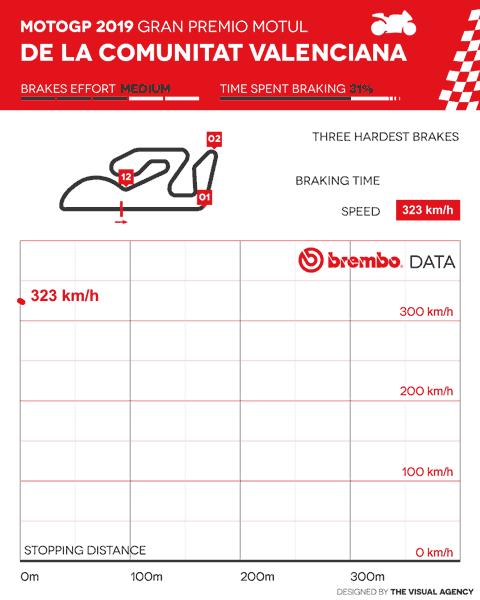As per tradition, the MotoGP World Championship will end with the Valencian Community Grand Prix, being held this year from November 15-17.
Stage of the race weekend, Circuit Ricardo Tormo is located just outside Valencia and is named for the first world champion rider from Valencia who died prematurely in 1998.
Inaugurated on September 19, 1999, it is distinguished by the length of the circuit which is just 4,005 meters (2.49 miles) (only Sachsenring is shorter), meaning the 65,000 spectators in the stands can keep the entire track within eyeshot.
The bikes travel counter-clockwise and have to face lots of corners, both left-handed (9) and right-handed (5).
Except for the long front straight, the track is made up of tight, technical corners where low gears are often used. It's no wonder that the average lap speed is the lowest in the entire championship: The record lap time is 161.2 km/h (100.2 mph), nothing compared to the 187.2 km/h (116.3 mph) on Red Bull Ring.
According to the Brembo technicians who assist 100% of the riders in the 2019 World Championship, Circuit Ricardo Tormo earned a 3 on the difficulty index, the lowest score of the four Spanish tracks in the World Championship.

